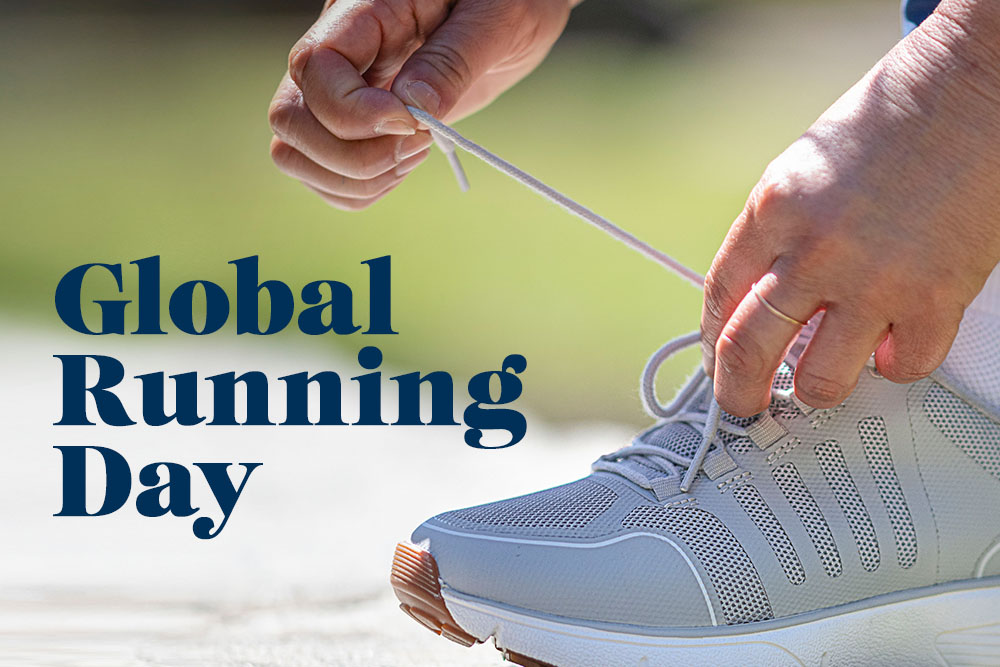Global Running Day – June 1st
Written by Brian Lane, C.Ped
Run?! No, I only run when someone chases me. The only running I know is the one in my stockings. I thought they said “rum.” Just don’t do it. I don’t even want to drive that far.
I know, I know. Running is one of those exercises that you either love or hate. But when I say “run,” it doesn’t mean you should be training for a marathon. Running for just 10 minutes a day can reduce the risk of cardiovascular disease, lower your resting heart rate, and helps to release endorphins for better sleep. Not to mention, it can be done almost anywhere at anytime with limited equipment.
Just like any new exercise, checking with your doctor is an important first step. The next step is ordering the right shoes. Dr. Comfort® has a great line of running shoes with a stability outsole. The outsole has a dual density rearfoot to help overpronation and a flared outsole. What that means is the shoe provides more stability and prevents walking on the inside of the foot. The styles with this feature great for running are the Gordon, Grace, Jack and Diane. The breathable upper materials will also ensure your run is comfortable and dry.
In addition, compression garments, like our Dr. Comfort® calf sleeve or other mild to moderate compression wear, can help for quicker recovery and re-oxygenation of blood. Proper shoes and compression will ensure your feet are ready to take you on that journey to cardiovascular health!
If you read our other blog on walking, we said “Walking is the first step to living a healthy lifestyle.” Well, to rephrase what Neil Armstrong said, walking is the small step for health but running is that giant leap for your well-being! Happy running!
For more information about compression wear, read our Compression Wear F.A.Q
The contents of this blog were independently prepared and are for informational purposes only. The opinions expressed herein are those of the author and are not necessarily indicative of the views of any other party. Individual results may vary depending on a variety of patient-specific attributes and related factors.

